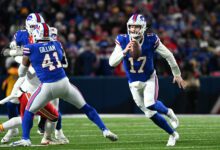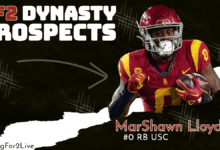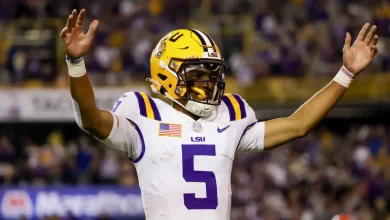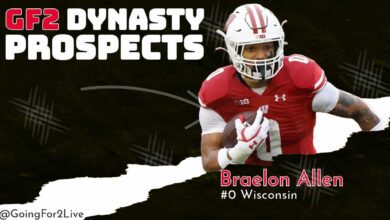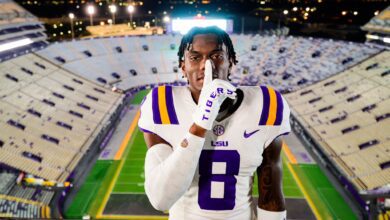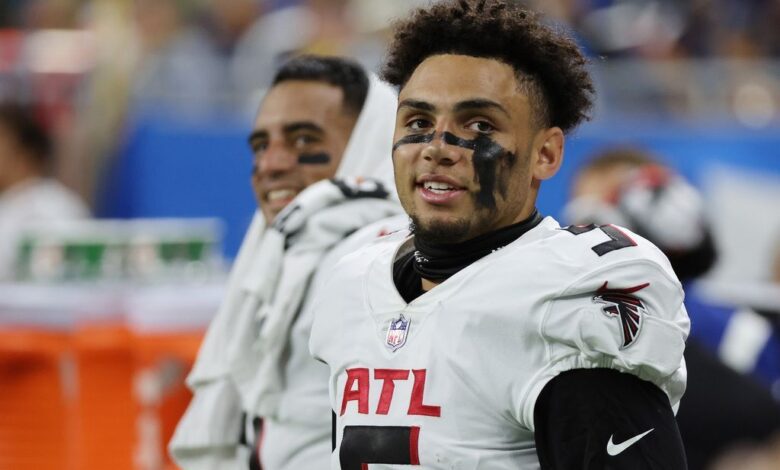
Abandon all hope, ye who enter here. Alright, that’s a bit too dramatic, but today we’re purposefully looking at small sample sizes to mine for an edge in dynasty transactions. In particular, I’ll focus on outlier yards per route run marks for wide receivers and tight ends. Yards per route run (YPRR) divides a player’s total receiving yards by the number of routes they ran. As a result, it’s an efficiency metric that shows how a receiver performed in their allotted routes. It allows you to compare receivers that have very different route numbers in a way that raw receiving yards do not.
I’m focusing on YPRR today because it has predictive power for future receiving success. When predicting future fantasy results of WR prospects coming out of college, YPRR is tied for 3rd in model gain behind draft capital and raw yards per game. And it’s very similar for predicting week-to-week NFL performances, falling behind only a few raw statistics that weed out low-volume players.
So, let’s get into it. Take a look at the graph below:
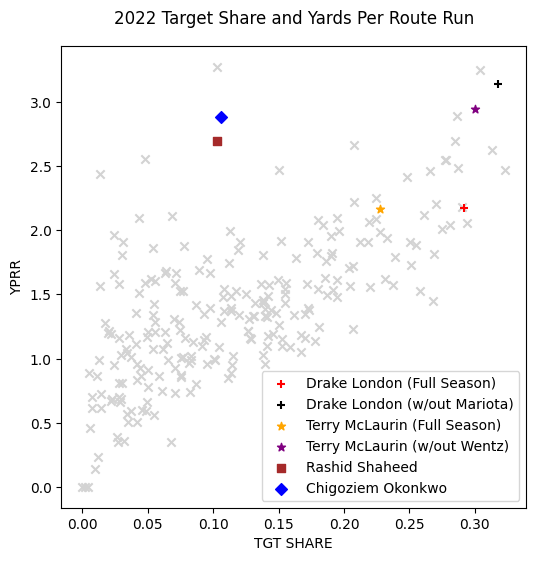
The graph has YPRR on the y-axis and target share on the x-axis. The benefit of including target share is that it’s a volume metric. By including it, we get some additional volume context that YPRR lacks as an efficiency metric. Every light grey x is a wide receiver or tight end in 2022. Ideally your dynasty players fall in the top-right of the graph, with both strong volume and efficiency. With that in mind, I’ve highlighted the players we’ll focus on today: Drake London, Terry McLaurin, Rashid Shaheed, and Chigoziem Okonkwo.

Drake London and Terry McLaurin finished the 2022 season with nearly identical YPRR marks. Filtering for players with at least 200 snaps, London ranked 22nd and McLaurin ranked 23rd in YPRR. Their similarities don’t end there. Both have some very interesting QB splits as highlighted in the graph. I’ve included both their full-season marks in the graph as well as their marks if we eliminated any snap where Marcus Mariota or Carson Wentz was on the field.
By doing that, both London and McLaurin move sharply up and to the right, gaining in both efficiency and volume. London without Mariota would’ve finished the season 3rd in YPRR and McLaurin similarly would’ve finished in the top 5. There’s optimism that both teams will have QB upgrades in 2023, providing hope that these gains can persist.
As mentioned, these are small sample sizes, though. McLaurin had 268 pass plays without Wentz on the field, while London had only 106 pass plays without Mariota on the field. Additionally, those same snaps for London also came without Kyle Pitts. Moreover, these two players as buys are also a bit dependent on the lifecycle of your dynasty team. (If you need any help in determining this for your specific league, you can do that here).
For example, Terry McLaurin is turning 28 years old. As a result, he is more suited for a contending team. I personally would be willing to pay his asking price of a late 1st round pick in 1QB dynasty leagues according to KeepTradeCut. London’s cost is significantly higher at an early 1st round pick due to his youth and draft capital.
Having said that, the cost gap between Garrett Wilson and Drake London is too wide in my opinion. If you have the 1.03 or later in a 1QB league, meaning you’ll miss out on Bijan Robinson and Jaxon Smith-Njigba, I would be willing to move that pick for London. I’m even fine with London over JSN depending on how you view the rookie.
Rashid Shaheed and Chigoziem Okonkwo fall into a different bucket than London and McLaurin. They don’t have an interesting QB split but have small sample sizes nonetheless. Shaheed and Okonkwo finished the 2022 season with 181 and 156 routes run, respectively. And they both finished within the top 5 in YPRR.
Moreover, they’re significantly cheaper to acquire than London and McLaurin, costing about a 3rd round rookie pick according to KeepTradeCut. While the rookie TE class is strong, the WR class is lacking, making Shaheed a low-cost bet I’m particularly willing to take.
However, as you can see from the graph, their target shares leave a lot to be desired. There is obvious risk with these players that they either cannot command volume sufficient to become starters in our fantasy leagues or cannot maintain their efficiency on higher volume.
Love our content? Check out the GoingFor2 Live Podcast Network!
Additionally, the track record at least from 2021 of these players hitting in a big way is lacking. Doing this same analysis in 2021 would’ve highlighted Deonte Harty and Kadarius Toney. To be fair, Harty only ran 14 routes in 2022, while Toney finished 29th in YPRR if you hand-pick a snap filter that includes him. Regardless, as Dr. Tobias Fünke would say:

Here’s hoping it works for us in 2023.
ATTN Dynasty Commissioners: Do you want to do something cool for your league? How about a 1-hour live show dedicated to YOUR league? Team-by-team breakdowns, rankings, and more. For details and to book a show, visit: GoingFor2.com/plp.
